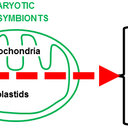In vitro catabolic effect of protoporphyrin IX in human osteoblast-like cells: possible role of the 18 kDa mitochondrial translocator protein.
Schlüsselwörter
Abstrakt
In several pathological conditions, when conversion of Protoporphyrin (PP)IX into heme is impaired, a toxic accumulation of PPIX might occur. PPIX has been found to have affinity to the mitochondrial Translocator Protein 18 kDa. Since it is known that TSPO is abundant in human osteoblast cells, thus we assumed that PPIX can affect cellular functions via interactions with TSPO in these cells. Therefore we aimed to study the metabolic responses of human osteoblast to a high (10⁻⁵ M) concentration of PPIX in vitro. We found that in primary culture of human osteoblast-like cells cell numbers decreased following exposure to PPIX(10⁻⁵ M). Cellular [¹⁸F]-FDG incorporation, mitochondrial mass, ATP content were suppressed, and ΔΨm collapsed. Lactate dehydrogenase activity was enhanced in culture media, indicating overall cell death, while no increase in apoptotic levels was observed. Cellular proliferation was not affected. Protein expression of TSPO, VDAC 1, and hexokinase 2 decreased, although the synthesis of mRNA for hexokinase 2 increased. Thus, PPIX(10⁻⁵ M) has a cytotoxic effect on human osteoblast-like cell in vitro. Since these cells remain viable following exposure to another TSPO ligand, PK 11195 (10⁻⁵ M), as observed previously by us, the mode of action of PPIX on osteoblast-like cells is not identical to that of PK 11195. Accordingly pathological accumulation of PPIX may cause necrosis of osteoblasts leading to bone mass loss. We show that this phenomenon is unrelated to iron overload.



